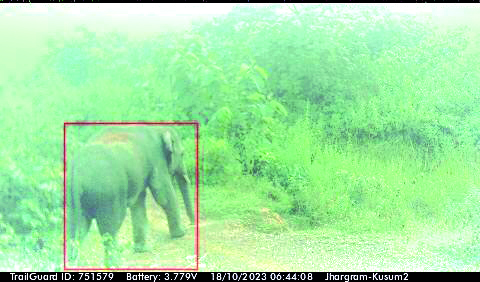Forest dept uses AI to detect and track jumbo movement

Kolkata: The Forest department has started a pilot project of using artificial intelligence through the installation of cameras at high-probability locations for the detection of elephants and tracking their movement.
The project is an integral part of the ‘Proof of Concept’ (PoC) exercise undertaken at Jhargram forest division which is being implemented by the Resolve team through JICA (Japan International Cooperation Agency).
“The initial pictures and results have started to come and the analysis has been confirmatory. The pilot project will continue for at least 18 months and if we get desirable results, it can be used effectively for the census of animals and most importantly for tracking the movement of jumbos so that intervention to tackle issues like entry into villages prevents damage to critical installations and similar problems can be made,” Debal Roy, state Wildlife Warden said.
A senior official of the department said that alert messages are being generated in real-time with images of elephants. These alerts are being sent through the Telegram app to the ‘quick response’ team members and other forest officials for timely interventions.
Elaborating on the technology, the official said once we are able to track the movement of the elephant, we may use some sort of sound to ward it off if it comes in close proximity to human habitation, hospital etc.
“It may also be used to ascertain which animals and in what numbers are coming within the observation range of the watchtowers at various places in the forests of south and north Bengal,” he added.
Jhargram has been chosen for the pilot project as in the recent past there has been quite a good number of reports of elephants entering into human habitation and the resulting man elephant conflict. Sumana Chattopadhyay is the project director of this JICA-sponsored project.
Once a week a meeting is being held on the basis of images and their analysis.
“We are hopeful of arriving at a concrete decision on how this artificial intelligence can be used in addressing issues associated with man-human conflict in other forests across the state by the end of the 2024 calendar year,” the official said.



